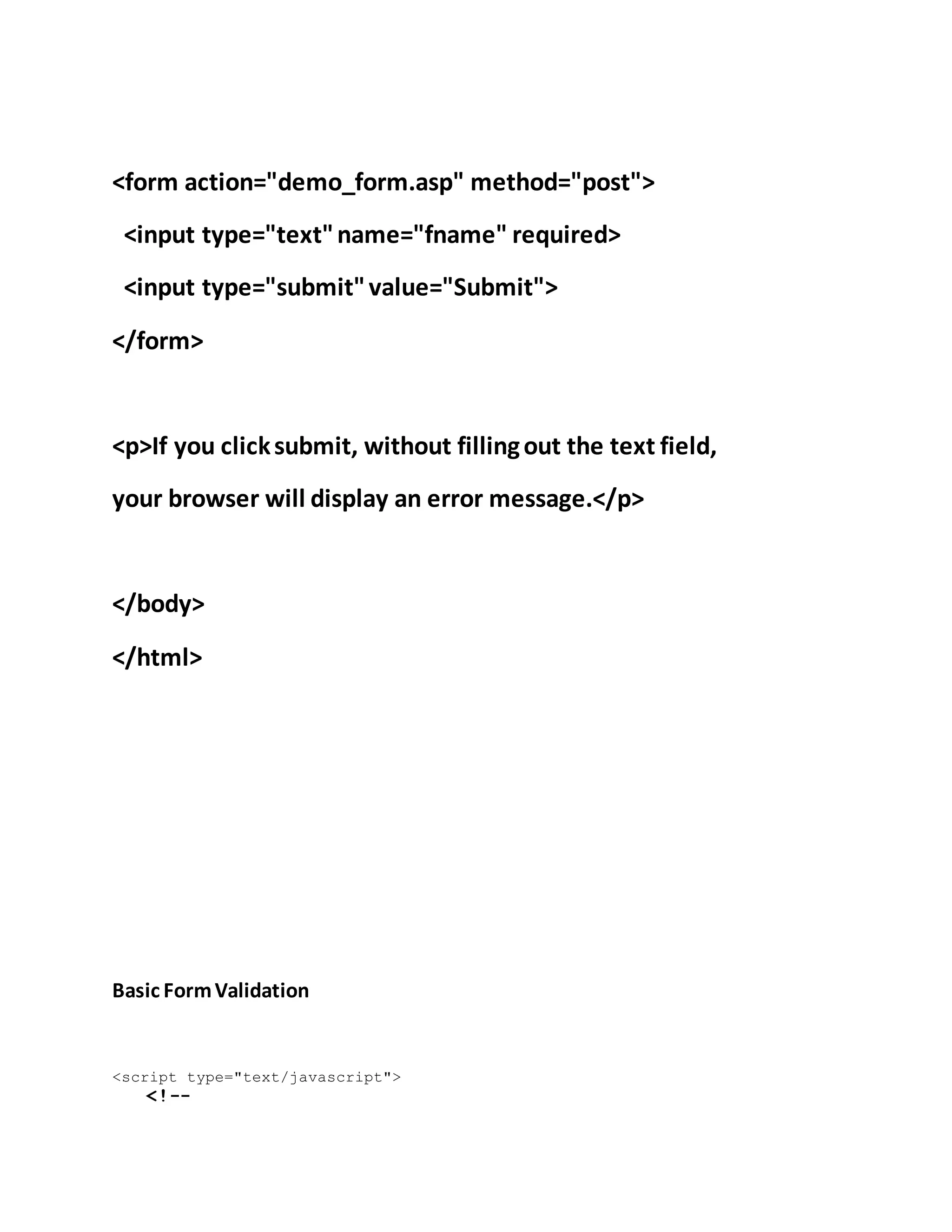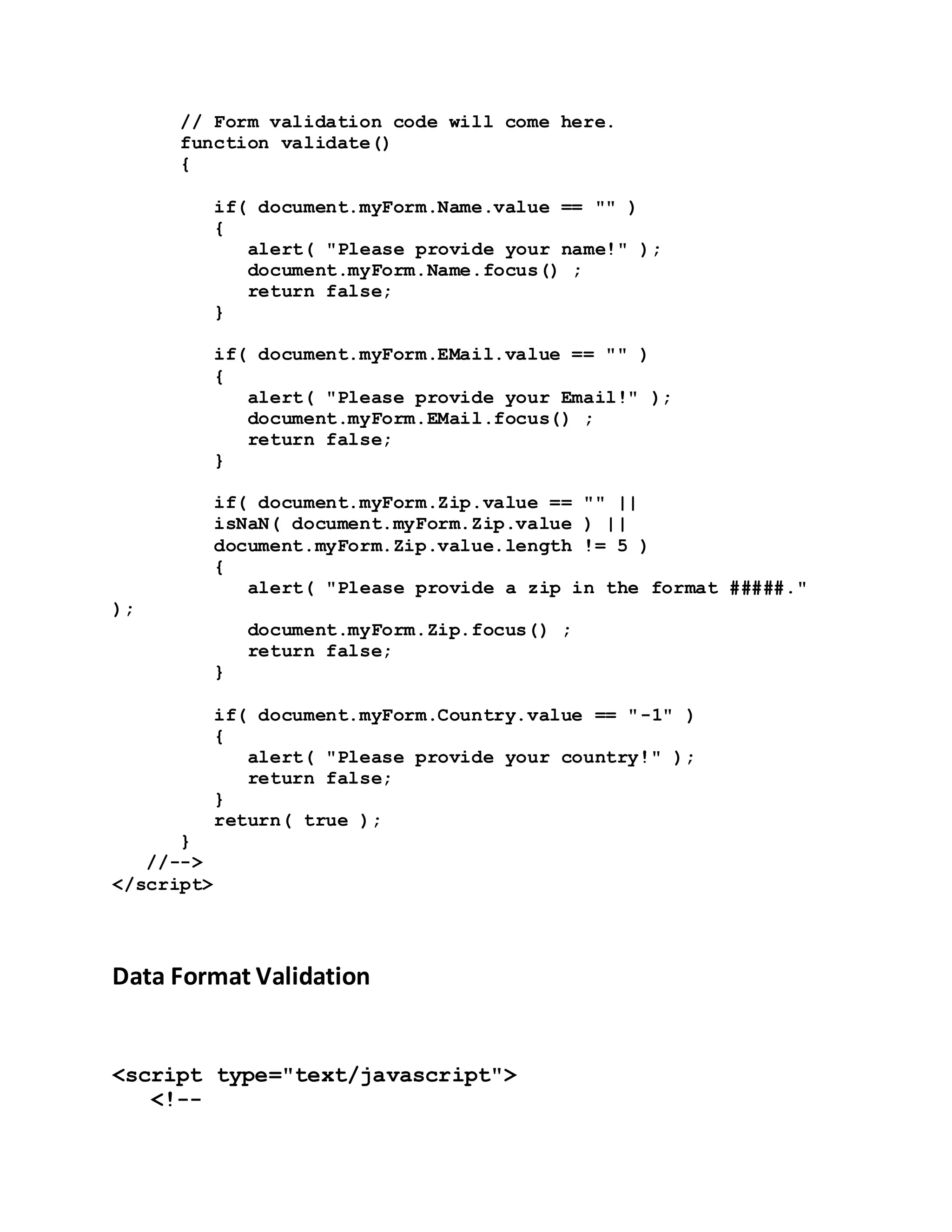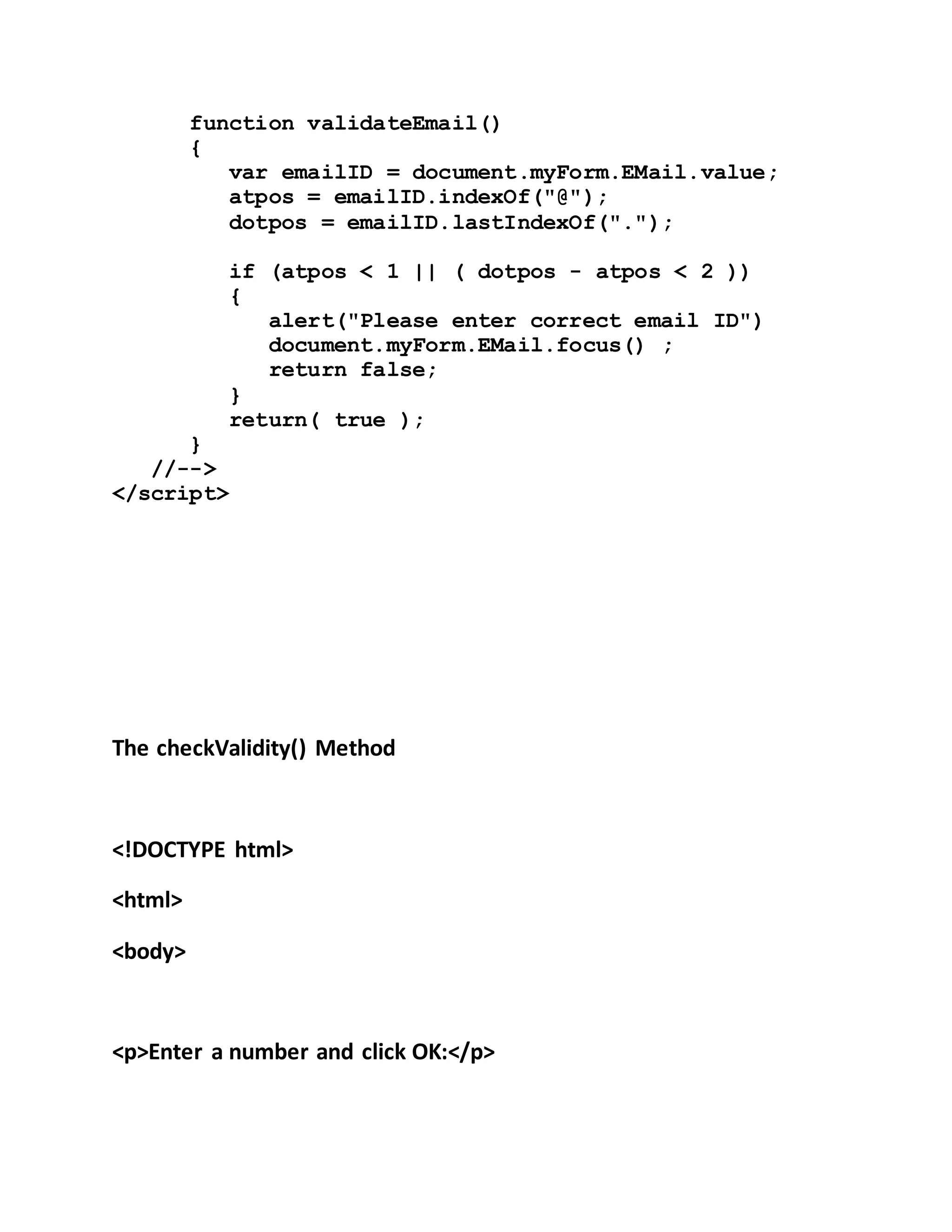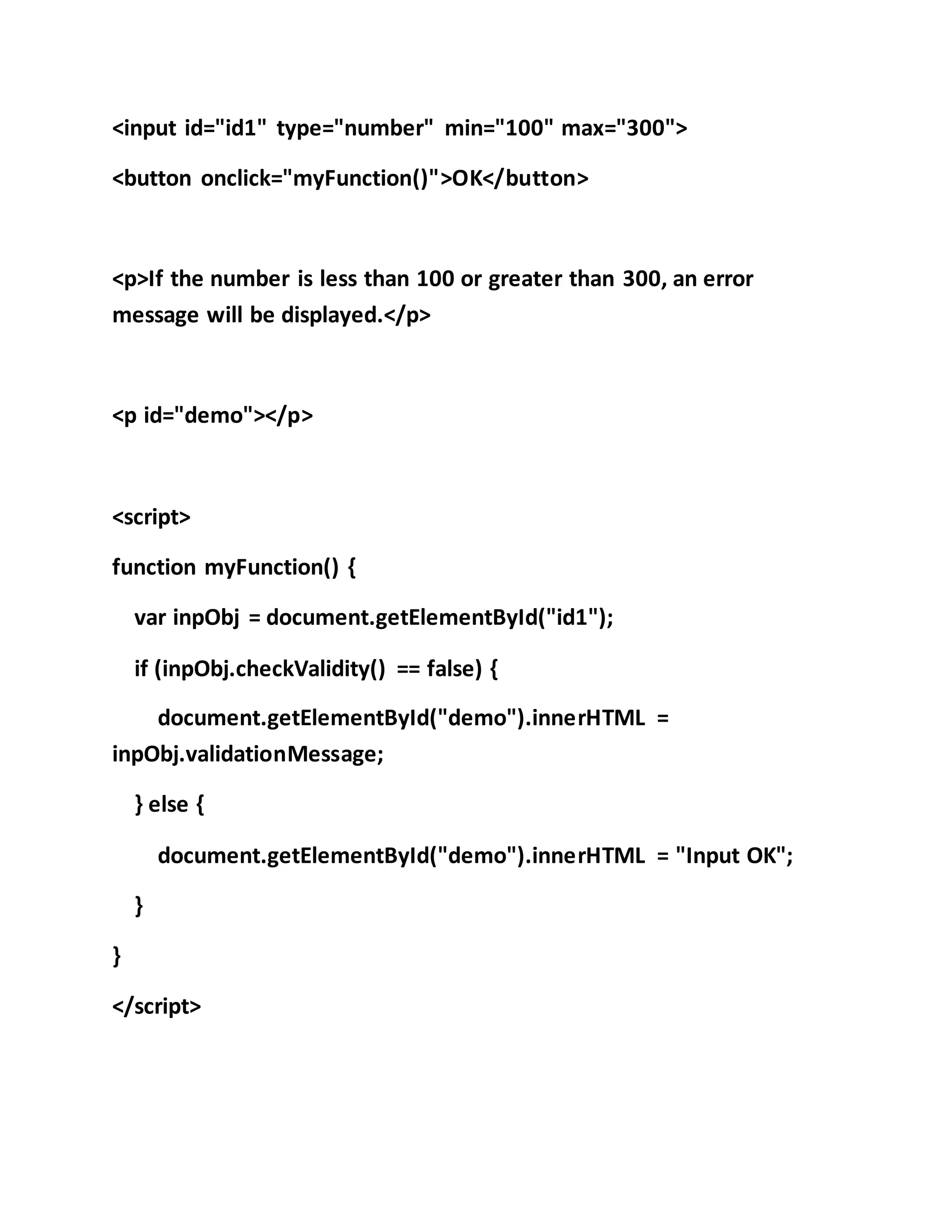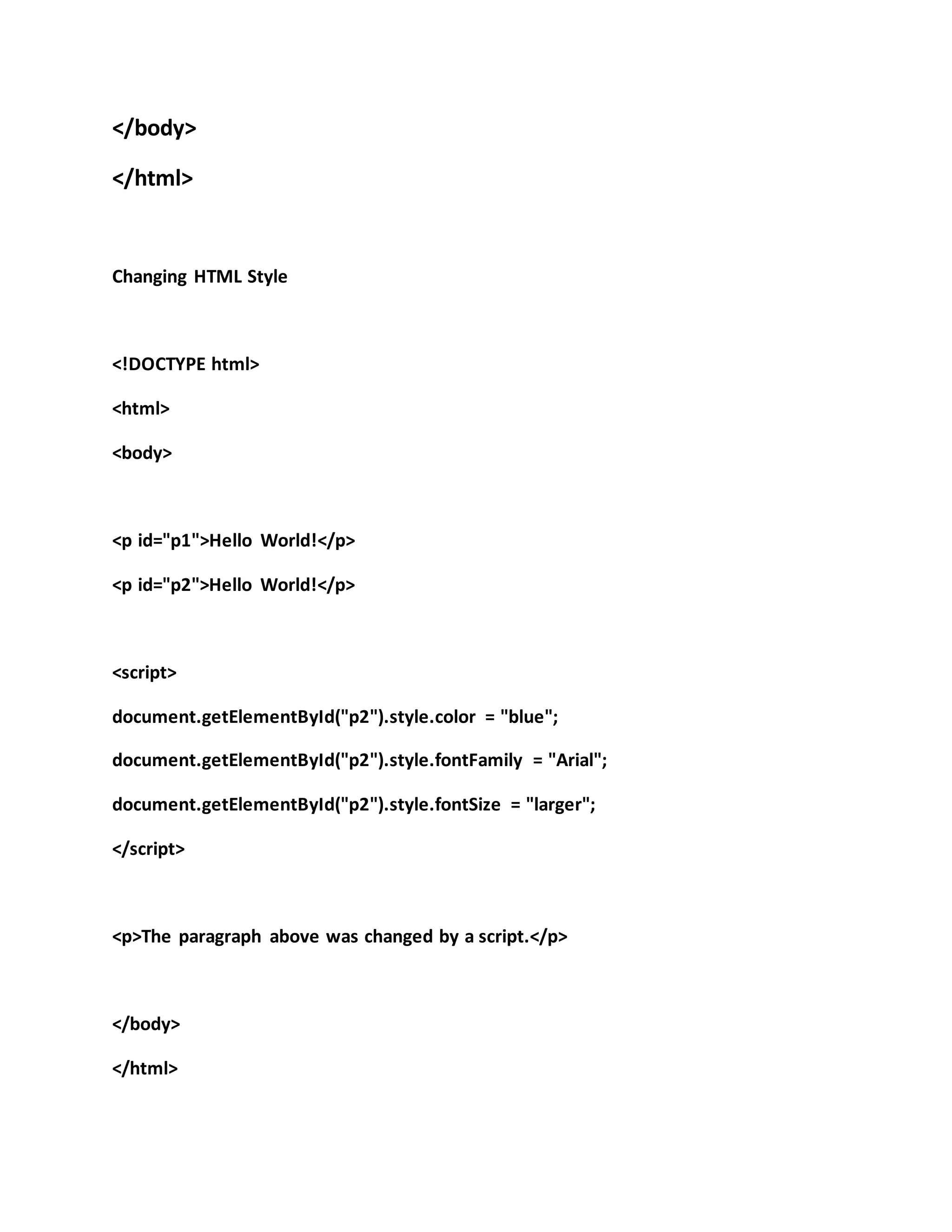JavaScript can be used to manipulate HTML documents by placing JavaScript code inside <script> tags. JavaScript is case sensitive and supports both single-line and multi-line comments. JavaScript can output data through alerts, writing to the document, or modifying HTML elements. Form validation can be done with JavaScript by checking for empty fields and validating data formats. Style properties of HTML elements can be changed using JavaScript.
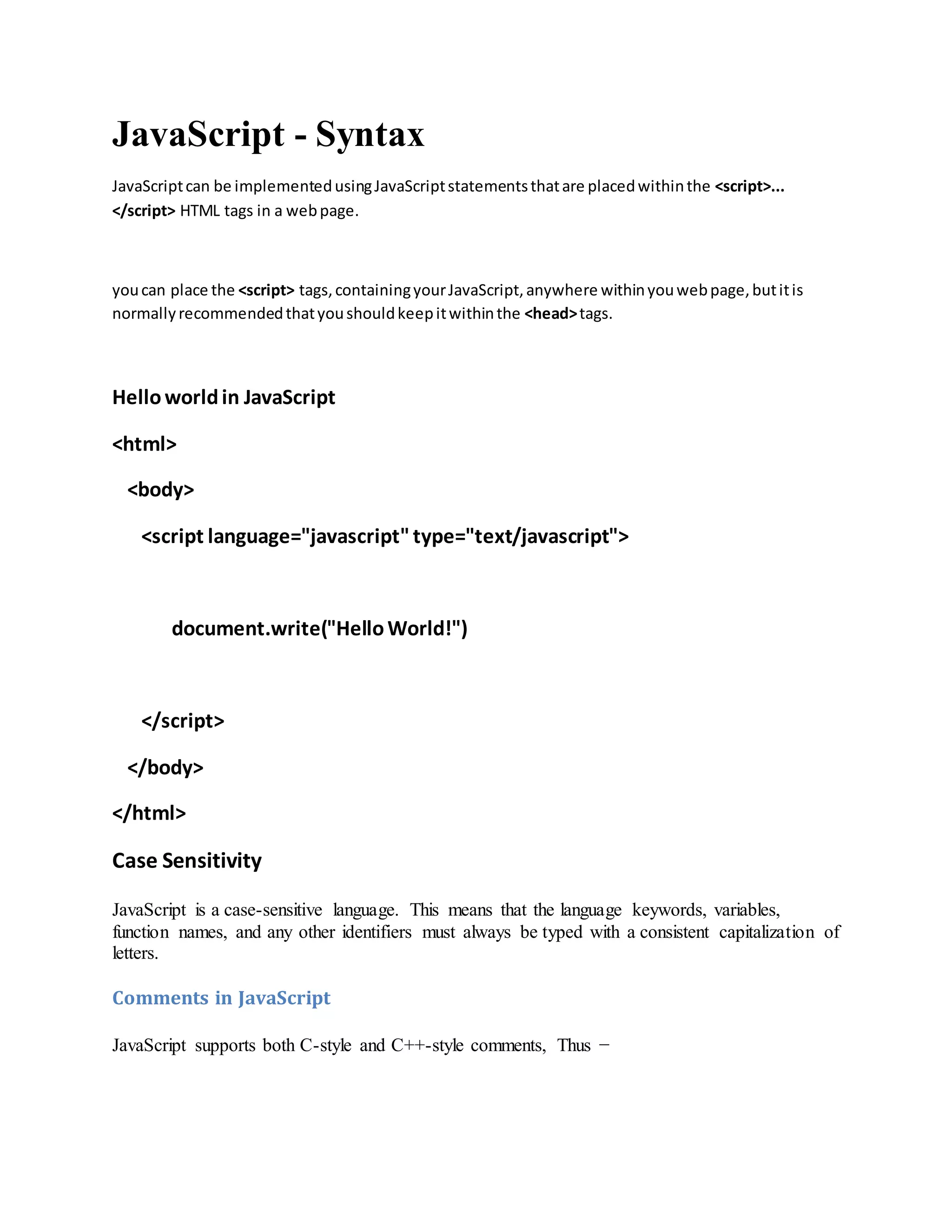
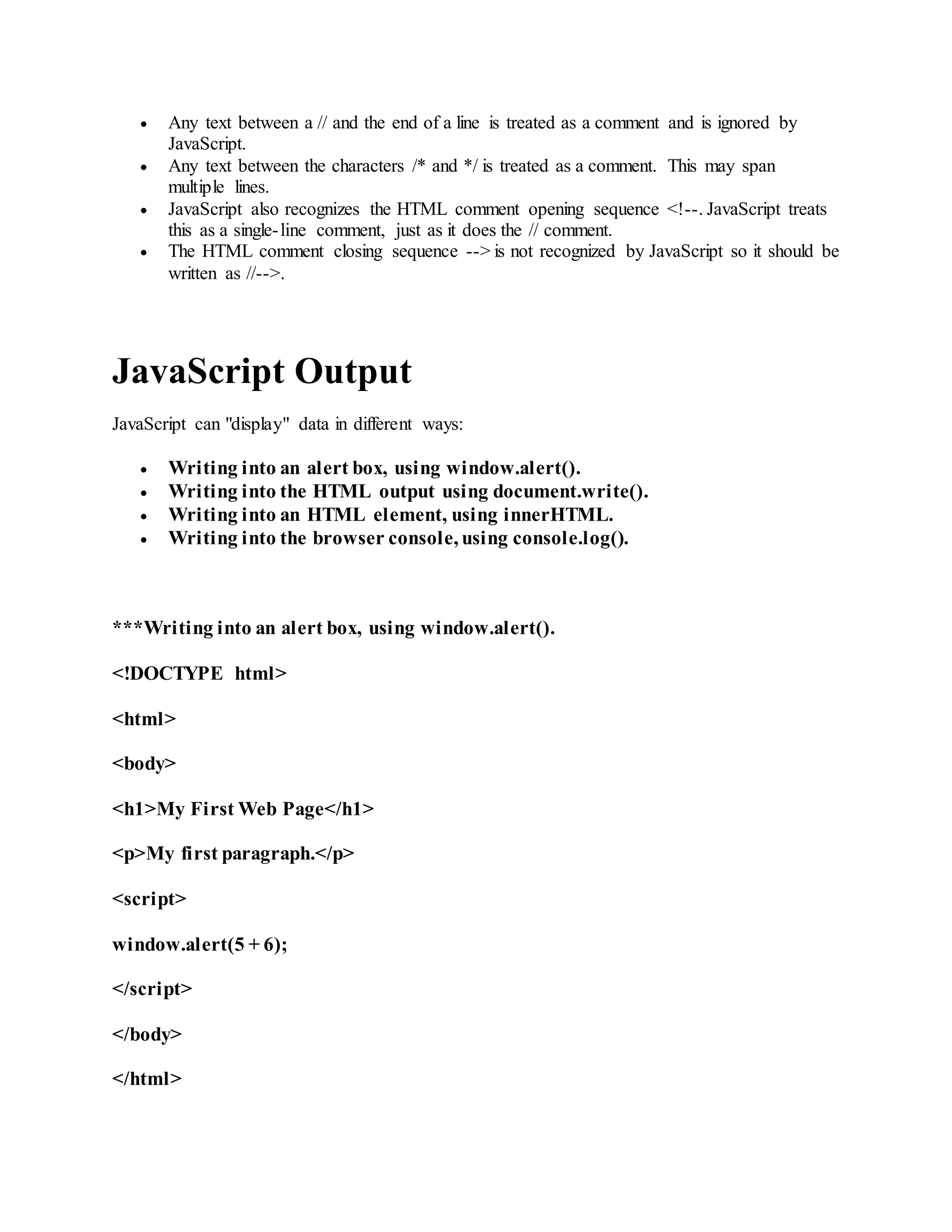
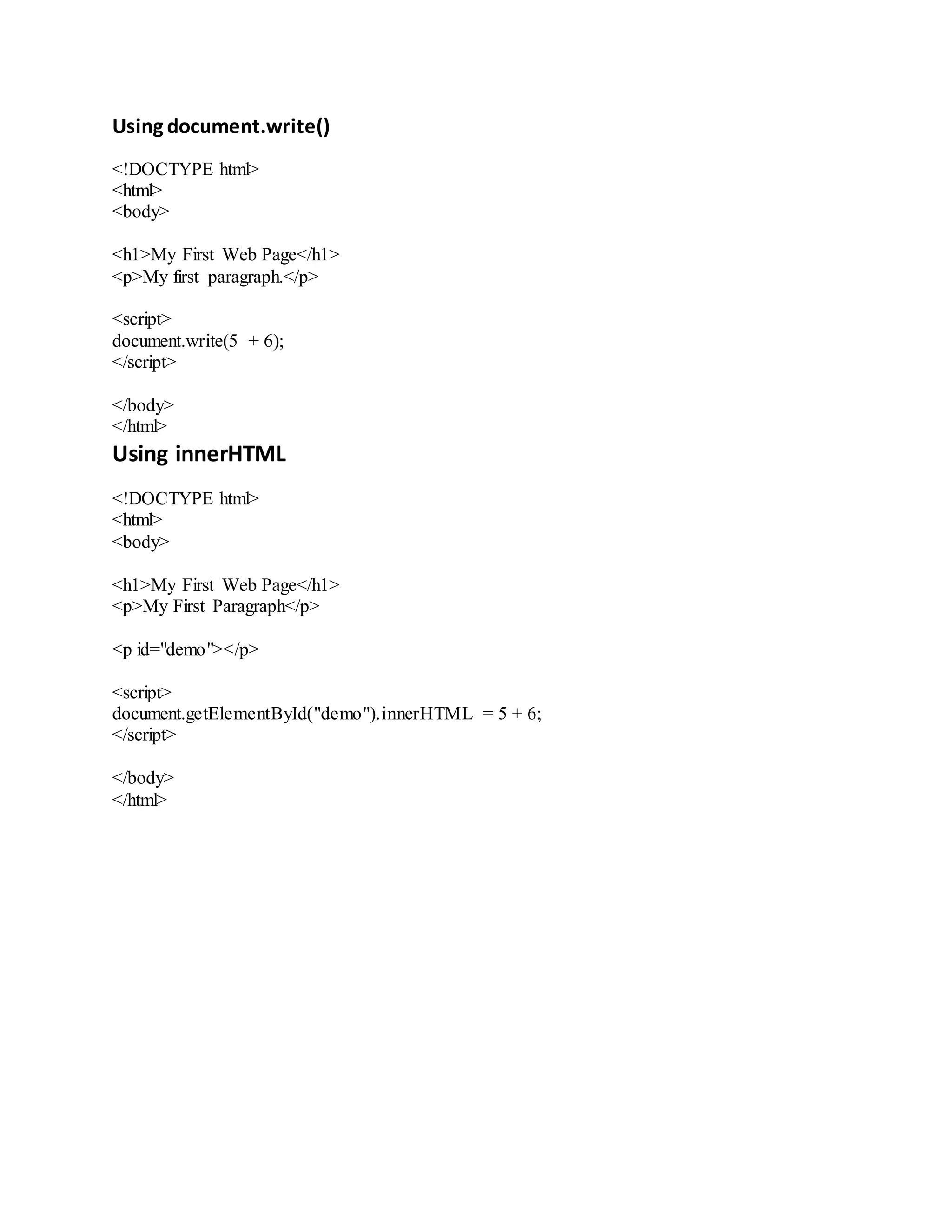
![What Is a Regular Expression?
A regular expression is a sequence of characters that forms a search pattern.
When you search for data in a text, you can use this search pattern to describe what you are
searching for.
A regular expression can be a single character, or a more complicated pattern.
Regular expressions can be used to perform all types of text search and text replace operations.
JavaScript Form Validation
HTML form validation can be done by a JavaScript.
If a form field (fname) is empty, this function alerts a message, and returns false, to prevent the
form from being
function validateForm() {
var x = document.forms["myForm"]["fname"].value;
if (x == null || x == "") {
alert("Name must be filledout");
return false;
}
}
<!DOCTYPE html>
<html>
<body>](https://image.slidesharecdn.com/javascript-161102180237/75/Java-script-4-2048.jpg)
